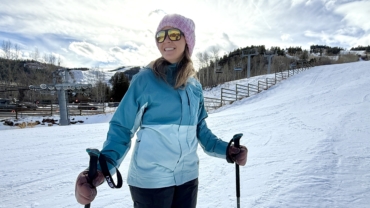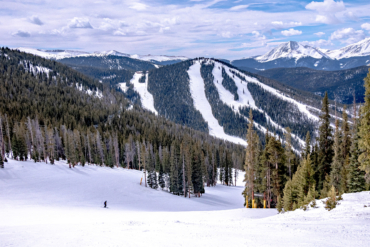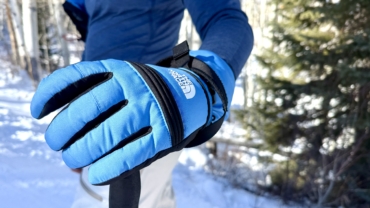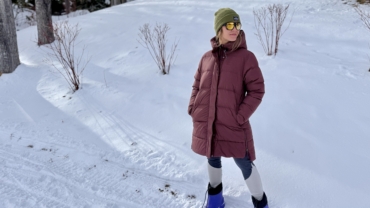‘Not a chance. It’s just too dangerous … I just can’t take that risk,’ said Adrian Ballinger on climbing K2 a second time.
The last time we checked in with mountain guide Adrian Ballinger, he provided plenty of insights on what it’s like to climb Mt. Everest without the use of bottled oxygen. He also discussed safety concerns over climbing the world’s highest peak, a conversation that proved prescient after 11 people died during the 2019 season.
Fast forward a year-and-a-half, and we’ve caught up with Ballinger once again. Coming off a busy summer climbing season in the Karakoram, where he summited K2 without supplemental oxygen, he once again had plenty of thoughts to share.
Ballinger told us why he doesn’t remember anything about his Everest summit, his impressions of record-setting climber Nirmal “Nims” Purja — and why he’ll never go back to K2 again.
Adrian Ballinger Interview: After K2
GearJunkie: Hi, Adrian! Great to chat with you again and welcome back from the Karakoram. Was this your first time climbing in Pakistan?
Ballinger: Yes, it was my first trip to Pakistan, the Karakoram, and K2. It has always been a dream of mine to climb that mountain, but with busy climbing seasons in the Himalaya in both the spring and fall, it never felt like it was the right time to go.
But after summiting Everest without oxygen in 2017, I was looking for a new challenge, and that inspired me to finally go.
Was it logistically different than climbing in Nepal and Tibet?
Yes, very much so. The tourism and mountaineering infrastructure in Pakistan is still being developed, so things are still a bit rough around the edges. Travel there is much harder and more dangerous, the food at base camp is a bit rougher, and dealing with trash and human waste on the mountain is still a big challenge.
That said, the Pakistani people are incredibly generous and accommodating. They are so excited about foreigners coming to climb there, and they bent over backwards to make us feel as welcomed as possible.
How did the expedition come together this summer to make your K2 climb possible?
It was really a serendipitous experience, actually. I’d been wanting to climb K2 for so long but just wasn’t sure if or when I’d get around to it.
Then I met Carla Perez, who is just an incredibly strong and experienced climber. She had wanted to climb K2 for years as well, and we started discussing how we could make that happen.
Some of the logistics behind the expedition came together when she joined Alpenglow Expeditions and became an Eddie Bauer sponsored athlete. After that, things just started falling into place, with our mutual friend Esteban “Topo” Mena volunteering to come along to help support our efforts.
But things got off to a rough start even before you reached base camp.
Yeah, there were definitely some challenges. The ride to Askole, the starting point of the trek to K2 base camp, was the scariest drive I’ve ever taken.
After that, the trek to [base camp] was only supposed to take 7 days, but I got sick with a stomach bug that knocked me out for a couple of days. The hike ended up taking 11 days in total, but it took even longer to shake my illness, which actually turned out to be a parasite.
I hadn’t even stepped foot on the mountain, and I was already feeling weaker. Thankfully, my doctor recommended some antibiotics to knock out whatever it was I had caught, but not before I gave it to Carla too.
Fortunately, by then we knew how to treat it and were able to nurse her back to health quickly.
Other than being sick during the trek, how was the hike to base camp?
It was utterly spectacular. The mountains in Pakistan are incredibly beautiful. It reminded me of being in Chamonix in the French Alps, but with everything being like three times bigger.
And what were your first impressions of K2?
I was excited by its beauty and blown away by how straight up and down it was. I was inspired and ready to go, but a bit intimidated, too. The mountain features 12,000 feet of real rock and ice climbing, which is very different than on Everest. It is much more technical and difficult.
What was it like on the mountain?
When we arrived in base camp, there were 200 people there focused on acclimatizing. The weather up until July 1 had been particularly bad, with rain down low and snow up high.
But after we got there, the skies cleared up and things improved dramatically. This made climbing on the lower sections of the mountain much easier and safer.
But up high was a different story. The locals told us that this past winter the Karakoram received the most snow it has seen in the past 30 years. Much of that was still on the mountain and was making things difficult and unsafe above the Bottleneck.
And all that snow proved to be a problem later.
Yes, most of the commercial teams ended up going home because once the rope-fixing team cleared the Bottleneck on K2, they found waist- and chest-deep snow that made it almost impossible to break trail.
It also meant there was a high chance for avalanches too, so they rightfully played it safe and made the choice to leave base camp.
But you and your team stayed?
By that point, we were finally feeling healthy and strong and had acclimated all the way up to Camp 4. We also knew that most summits on K2 came in the final week of July or first week of August — although climate change is shifting that up somewhat.
We hoped that by being patient, we could still get a crack at the summit and achieving our goals. Carla and I were prepared to stay until mid-August if need be.
That patience paid off in a big way.
There were two things that ended up playing out in our favor.
First, strong monsoon winds unexpectedly hit the mountain, clearing all of that snow off the peak above the Bottleneck. That meant we could climb much more safely and efficiently.
The second thing was the arrival of Nims Purja in base camp, which brought some much-needed energy and enthusiasm to the expedition.
What did you think of climbing with Nims?
What you’ve seen online is accurate. He’s got a ton of charisma and lots of energy, which is infectious. When he arrived in base camp, he went around and talked to everyone who was there. He is incredibly strong and confident, and he brought a big boost of morale for all us who stayed on the mountain.
What impressed you about him the most?
Just the fact that he can remain focused and upbeat while attempting such a grueling feat. What he’s doing is not as hard as climbing without oxygen — but the grind of organizing the logistics, handling fundraising, traveling to each of the mountains, and climbing all of these 8,000m peaks takes its toll.
And yet, he seems to roll with adversity and remains positive no matter what roadblocks are put in his way.
How did Nims help you to reach the summit of K2?
Once he was on the mountain, Nims and his team took over the rope-fixing duties and the challenges of breaking trail. We ended up taking different routes up the mountain but reconnected at Camp 4.
After that, we followed along a bit behind, moving slower without oxygen. With he and his sherpas leading the way, we were able to summit much more safely.
What was it like when you finally reached the top?
It was so emotional! It was the culmination of years of dreaming and planning for both Carla and I. There was also a huge sense of relief too, as the climb up was incredibly scary.
How so?
Climbing K2 is far more technical than Everest, particularly when going up the Bottleneck. We spent 6 hours on that section alone, with dangerous serac fall all around us. It was incredibly dangerous — and once we cleared that section, we knew we were going to make it.
How did you balance the risks of climbing in that environment with the rewards of reaching the summit?
Honestly? Two months later, I’m still trying to process my feelings on that topic. I hated every moment that I was on the Bottleneck, but there was never a question that I would turn back.
I’d come so far and worked too hard. That helped to make the successful summit all the more satisfying, even as I knew that I would never climb the Bottleneck again. It’s just way too dangerous and scary.
Never? You wouldn’t go back to climb K2 for a second time?
Not a chance. It’s just too dangerous. I feel bad about it too, because Topo Mena came to support Carla and I on the mountain and would now like to attempt K2 without oxygen too.
But I’ve had to tell him that I can’t come back to support him on his attempt. I just can’t take that risk.
What are your thoughts on the commercialization of K2 in recent years?
In a lot of ways, it is following the same path as commercialized climbing on Everest, although the numbers are obviously not that high. For climbers, the risk is real, but they only come for one season and then go home.
The workers — such as the guides, sherpas, and high-altitude porters — are the ones truly at risk. Making multiple trips to K2 year after year means that it is just a matter of time before something bad happens. For that reason, Alpenglow will never lead a commercial team to the mountain.
Was there anything that surprised you about K2?
The amount of trash and human waste on Everest has been widely documented, but it is actually worse on K2. Pakistan lags behind Nepal in terms of how to deal with this issue, and as a result, the environment on the mountain is in serious jeopardy.
You have now climbed both Everest and K2 without oxygen. Which one was harder?
That’s not an easy question to answer. From a technical standpoint, there is no question that K2 is more challenging.
But I’ve learned that I can climb up to 8,600 m without it impacting my body too dramatically. Anything above that creates some issues. Because of this, I don’t remember anything about my Everest summit from that altitude up.
On K2, I remember the entire climb and was fully cognizant of being on the summit.
Was there any difference in the gear that you took to K2 versus Everest?
 On the surface, you wouldn’t necessarily think so. But there actually was. On Everest, it was all about staying warm. On K2, I needed to be able to move more freely and handle the technical climbing more easily.
On the surface, you wouldn’t necessarily think so. But there actually was. On Everest, it was all about staying warm. On K2, I needed to be able to move more freely and handle the technical climbing more easily.
Because of this, I worked closely with Eddie Bauer to develop a down suit that is 20-percent lighter than previous models. This made it easier to move in, which was important for the technical ice and rock climbing on K2. We actually ended up sacrificing a bit of warmth in favor of freedom of motion.
That same philosophy extended to my boots too, as I ended up using the La Sportiva G2 SM, which has a lower profile than the boots I use on Everest, giving me more flexibility in climbing.
Now that you’ve been home for a bit, have you thought about what comes next?
Really, I’m just trying to enjoy our accomplishments on K2 and be content with that for a bit. I haven’t really allowed myself to look further down the road just yet.
I do want to get back to more rock climbing and work on my skills there, so this fall I’m planning on going to Yosemite to support my girlfriend, Emily [Harrington], as she attempts El Capitan in a day. I’ll get the chance to be a dirtbag climber for a bit. I’m really looking forward to that.









